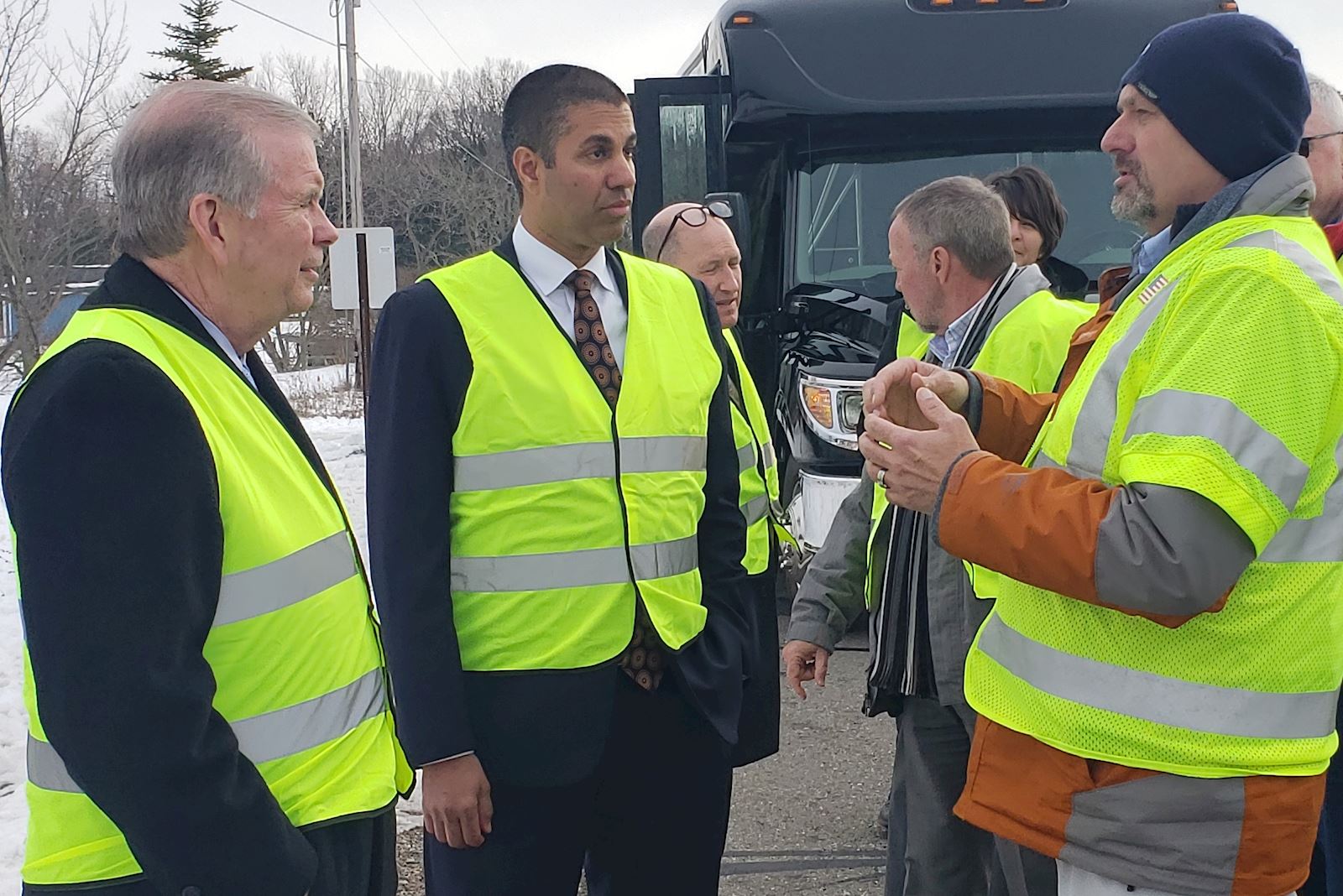Electric Cooperatives Change Approach at FCC
Published
by Bob Hance on Wednesday, March 4, 2020
in
Community
 Congressman Tim Walberg and FCC Chairman Ajit Pai learn more about MEC's fiber project from Terry Rubenthaler, MEC Chief Technology Officer.
Congressman Tim Walberg and FCC Chairman Ajit Pai learn more about MEC's fiber project from Terry Rubenthaler, MEC Chief Technology Officer.
Years ago, a coalition of rural electric cooperatives, including us, began making noise at the Federal Communications Commission (FCC) for financial consideration as a player in the telecommunications space. The noise paid off in 2018 when we were awarded just north of $5 million in the Connect America Fund (CAF) Phase II auction.
Given the fact that the CAF II auction came to play only after the incumbents got their fat pay-outs for broadband infrastructure they may or may not build, it was still a victory in the bigger scheme of things, and a small step that could become a giant leap as the FCC prepares for a new round of funding.
The Rural Digital Opportunity Fund (RDOF) is the latest iteration, and one that puts over $20 billion into play over the next decade. But this one is different, because the FCC learned through CAF that rural electric cooperatives stand ready to deliver the kinds of speeds and experiences that the incumbents and others won’t.
RDOF targets areas that lack access to broadband service with speeds of at least 25 megabits per seconds (Mbps) downstream and three Mbps upstream (25/3); CAF was 10/1. It’s written to reward faster speeds and lower latency such as gigabit service, helping to ensure that superior technologies prevail.
The reality is that even a 25/3 standard isn’t enough, but it’s a step in the right direction. The incumbents will argue that no one needs a gigabit today, but as Broadband Communities magazine recently reported, when it comes to building networks for the future, what people need today isn’t all that relevant.
“… consumer demand for bandwidth is growing so quickly that it’s impossible to engineer and build a network that meets today’s requirements and will remain relevant tomorrow, except by over-engineering it,” the magazine reported. The article referenced Nielsen’s Law of Internet Bandwidth, which states that a high-end user’s need for bandwidth grows by 50 percent per year, meaning the consumer who uses 100 megabits per second today will use 760 megabits in just five years.
What’s driving that demand? It’s largely video traffic and the growing number of internet-enabled devices in homes, including everything from computers, phones and tablets to internet-enabled security systems, connected thermostats, and smart speakers like Alexa and Google Home.
While we’ve already taken the plunge with getting robust internet into the hands of our electric customers, an opportunity like RDOF is a great catalyst to move others to action as it removes some of the onerous financial barriers to entry. It could also allow us to expand our service into adjacent rural areas, helping us fulfill our vision of creating vibrant, relevant, sustainable rural communities. The FCC designed a better machine with RDOF, as it affirms the reality that people in the rural space need and deserve the same robust platforms and speeds that are available in more urban areas.